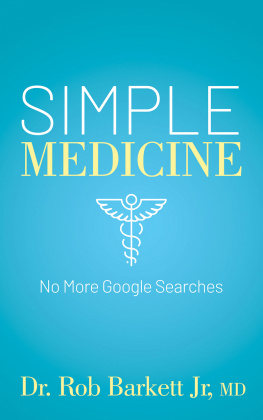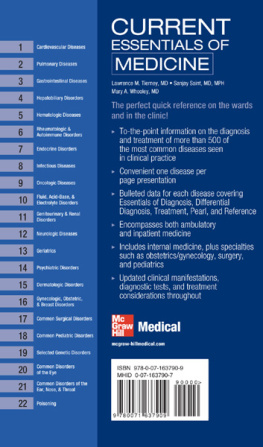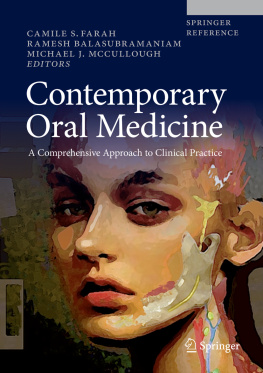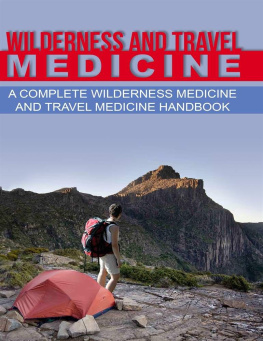
Copyright 2012 by The McGraw-Hill Companies, Inc. All rights reserved. Except as permitted under the United States Copyright Act of 1976, no part of this publication may be reproduced or distributed in any form or by any means, or stored in a database or retrieval system, without the prior written permission of the publisher.
ISBN: 978-0-07-177001-9
MHID: 0-07-177001-1
The material in this eBook also appears in the print version of this title: ISBN: 978-0-07-175497-2, MHID: 0-07-175497-0.
All trademarks are trademarks of their respective owners. Rather than put a trademark symbol after every occurrence of a trademarked name, we use names in an editorial fashion only, and to the benefit of the trademark owner, with no intention of infringement of the trademark. Where such designations appear in this book, they have been printed with initial caps.
McGraw-Hill eBooks are available at special quantity discounts to use as premiums and sales promotions, or for use in corporate training programs. To contact a representative please e-mail us at bulksales@mcgraw-hill.com.
NOTICE
Medicine is an ever-changing science. As new research and clinical experience broaden our knowledge, changes in treatment and drug therapy are required. The authors and the publisher of this work have checked with sources believed to be reliable in their efforts to provide information that is complete and generally in accord with the standards accepted at the time of publication. However, in view of the possibility of human error or changes in medical sciences, neither the authors nor the publisher nor any other party who has been involved in the preparation or publication of this work warrants that the information contained herein is in every respect accurate or complete, and they disclaim all responsibility for any errors or omissions or for the results obtained from use of the information contained in this work. Readers are encouraged to confirm the information contained herein with other sources. For example and in particular, readers are advised to check the product information sheet included in the package of each drug they plan to administer to be certain that the information contained in this work is accurate and that changes have not been made in the recommended dose or in the contraindications for administration. This recommendation is of particular importance in connection with new or infrequently used drugs.
TERMS OF USE
This is a copyrighted work and The McGraw-Hill Companies, Inc. (McGraw-Hill) and its licensors reserve all rights in and to the work. Use of this work is subject to these terms. Except as permitted under the Copyright Act of 1976 and the right to store and retrieve one copy of the work, you may not decompile, disassemble, reverse engineer, reproduce, modify, create derivative works based upon, transmit, distribute, disseminate, sell, publish or sublicense the work or any part of it without McGraw-Hills prior consent. You may use the work for your own noncommercial and personal use; any other use of the work is strictly prohibited. Your right to use the work may be terminated if you fail to comply with these terms.
THE WORK IS PROVIDED AS IS. McGRAW-HILL AND ITS LICENSORS MAKE NO GUARANTEES OR WARRANTIES AS TO THE ACCURACY, ADEQUACY OR COMPLETENESS OF OR RESULTS TO BE OBTAINED FROM USING THE WORK, INCLUDING ANY INFORMATION THAT CAN BE ACCESSED THROUGH THE WORK VIA HYPERLINK OR OTHERWISE, AND EXPRESSLY DISCLAIM ANY WARRANTY, EXPRESS OR IMPLIED, INCLUDING BUT NOT LIMITED TO IMPLIED WARRANTIES OF MERCHANTABILITY OR FITNESS FOR A PARTICULAR PURPOSE. McGraw-Hill and its licensors do not warrant or guarantee that the functions contained in the work will meet your requirements or that its operation will be uninterrupted or error free. Neither McGraw-Hill nor its licensors shall be liable to you or anyone else for any inaccuracy, error or omission, regardless of cause, in the work or for any damages resulting therefrom. McGraw-Hill has no responsibility for the content of any information accessed through the work. Under no circumstances shall McGraw-Hill and/or its licensors be liable for any indirect, incidental, special, punitive, consequential or similar damages that result from the use of or inability to use the work, even if any of them has been advised of the possibility of such damages. This limitation of liability shall apply to any claim or cause whatsoever whether such claim or cause arises in contract, tort or otherwise.
Preface: How the Book Is Organized
This book is divided into several sections, beginning with introductory chapters that describe resource-poor situations that may require medical improvisation. Subsequent sections discuss: Basic Needs, Patient Assessment/Stabilization, Surgical Interventions, and Non-Surgical Interventions. The Appendices provide useful information about preparing a hospital disaster plan and assembling medical kits for different activities.
The Basic Needs section begins with communication alternatives, since difficult communication is the most frequently cited problem in resource-poor situations. Improvised methods for preventive medicine/public health come next, since supplying clean drinking water and suitable waste facilities saves more lives (in a non-dramatic way) than all the interventional medical treatments combined. Finally, I discuss improvised basic equipment for health care and methods for cleaning and reusing medical equipment under resource-poor conditions.
Not all improvised equipment is discussed in this section, since most equipment improvisations are described in the chapter appropriate for their use. Reusing medical equipment is, rightfully, a controversial subject, since inadequate cleaning, disinfection, and sterilization lead to passing diseases from one patient to another. The best available information has been used to provide guidance for when supplies and cleaning methods are suboptimal.
The Patient Assessment/Stabilization section describes methods and improvised equipment to assess vital signs, and to manage airways, breathing, circulation, and dehydration/rehydration (vital to saving childrens lives). Also included are improvisations and alternatives for medications and medication delivery, imaging, laboratory testing, and patient movement/evacuation. Four chapters describe improvisations for analgesia, local and regional anesthesia, and general anesthesia. The Sedation and General Anesthesia chapter includes techniques for both non-anesthesiologists and anesthesiologists. The Ketamine, Ether and Halothane chapter describes the most common anesthetics used in developing countries, including unique administration methods. Younger anesthesiologists, as well as other practitioners who may be called upon to give ketamine or ether, may be unfamiliar with these medications or alternative administration techniques.
While not everything in the Surgical Interventions section is strictly surgical (e.g., there is a chapter on neurology/neurosurgery), dividing the chapters in this way provides a convenient method of locating information. The two Dental and the Orthopedics chapters occupy significant space, since health care professionals often need to apply these skills in resource-poor environments even if they have little training in these areas. All chapters in the Surgical Intervention section describe improvised equipment and techniques that can save lives. For instance, the Otolaryngology chapter describes the old, very basic, technique of placing posterior nasal packs, while the Obstetrics/Gynecology chapter describes balloon tamponade for peripartum and other vaginal bleeding.









